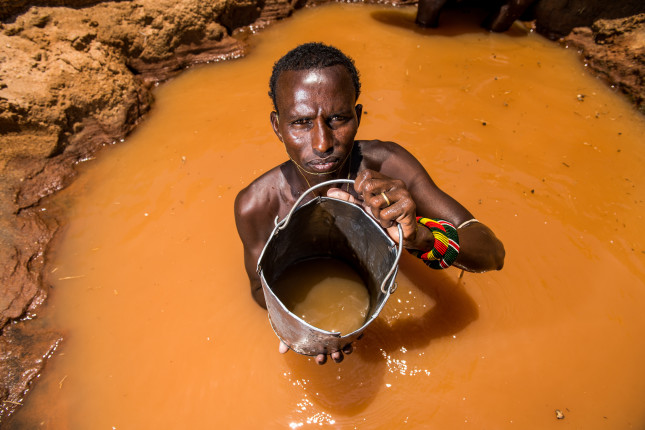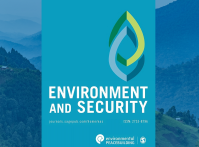-
Providing Water Security in an Uncertain World
August 20, 2019 By Nathanial Matthews
A problem is looming. Most water infrastructure isn’t designed to meet the demands of the increasingly volatile world that climate change is producing. Our modern landscape requires a reconceptualization of infrastructure’s demands and needs that often defies convention. And nowhere is a flexible and responsive approach more crucial than in water infrastructure, where we are experiencing unprecedented changes in flows and increasing pressures on consumption, according to Wellspring: Source Water Resilience and Climate Adaptation, a new report from the Global Resilience Partnership, the Alliance for Global Water Adaptation and The Nature Conservancy. The report explores some ways practitioners can take a new approach to source water protection that would enhance resilience and help sustain communities and ecosystems in a shifting climate.
Engineers typically base their projections of future needs, and thus their plans, on past events. They assume that future climate and hydrological conditions will be broadly similar to those of the past. But as climate change fundamentally reshapes our world, we can no longer plan for the future based on historical patterns or trends.
Flawed Typical Responses
Across the southwestern United States, for example, the rising demand for water has coincided with prolonged periods of drought. Here, the increasing likelihood that the once-mighty Colorado River might dry to a trickle illustrates the dangers of outdated infrastructure planning around watersheds. In order to provide for societies contending with greater agricultural needs and expanding cities, we must rethink our approach to ensure long-term water security. We must build resilient infrastructure that prioritizes ecological sustainability.
The quality and quantity of water flowing into thousands of growing cities around the world directly depends on the landscapes through which that water travels. Smart land management in the water basins surrounding a city can promote water filtration and produce cleaner, more reliable downstream flows—whereas deforestation, poor agricultural practices, and other damaging forms of land use impair downstream water quality and flows.
Often, the response to these systemic management challenges has been the installation of more gray infrastructure, including aqueducts, reservoirs, and treatment plants. But even the most robust concrete solutions suffer a serious flaw in our new age of climate uncertainty: They are rigid and built to specifications that cannot flex or adapt to changing conditions.
Prioritizing Ecological Sustainability
In contrast, ecological sustainability updates traditional engineering thinking with an enlightened understanding of the importance of natural ecosystem services, such as air or water purification, detoxification and decomposition of wastes, regulation of climate, regeneration of soil fertility, and production and maintenance of biodiversity, in crafting sustainable solutions for a world of high uncertainty and uncontrollability. If engineering sustainability is about robustness and optimization, ecological sustainability is about maintaining diversity and redundancy and managing connectivity. This systems approach will help build resilience, or the ability to thrive in uncertain conditions.
Ecological sustainability relies on the use of source water protection (SWP)—the collective term for strategies such as watershed restoration that seek to repair and reinstate the capacity of natural landscapes to provide clean and reliable freshwater. Such approaches already benefit millions of people around the world, from North America to Southeast Asia.
Nature-based Solutions
Restoring watersheds and ensuring source waters remain healthy will become even more important as climate change reshapes the world around us. Whereas traditional engineering solutions become obsolete or fail in the face of changing landscapes and water flows, nature-based solutions adapt to those changes. They are a part of that changing landscape.
A prime example of how natural resilience mechanisms can help communities and ecosystems thrive in the face of climate change is the Ecology and Gender Based Flood Resilience Project in Hue City, Vietnam, funded by the Global Resilience Partnership and led by University of Potsdam. Hue City, home to approximately 350,000 people, is built around the Huong (Perfume) River. In recent years, a combination of rapid urbanization and climate change has changed the topology and hydrology of the river, leading to more extreme and unpredictable flooding.
In the past, Hue City had a number of lakes, rivers and man-made canals that helped absorb and drain flood waters, but construction and solid waste has blocked many of these bodies of water. The project team realized that the restoration of natural retention and drainage areas would need to be a key strategy for absorbing changing levels of rainfall and minimizing flood impacts.
Women Build Resilience
Crucially, the team also recognized the critical role of women in resilience building. Women play a principal role in securing food and water supplies for their families and communities in developing countries. As central managers of natural resources, women have the knowledge and experience to build community resilience. Unfortunately, women commonly experience more social, cultural, economic, and political disadvantages, such as limited education opportunities and limited job prospects, that can result in higher mortality rates during floods. They also experience higher poverty rates after floods due to more unemployment and the lack of legal rights, such as to land, as well as greater psychological stress during and after disasters stemming from their caretaker roles in the family.
The project team partnered with local organizations to focus on enabling women to lead the restoration, conservation, and sustainable management of natural retention and drainage areas in Hue City. These bottom-up, nature-based solutions provided a means to strengthen the role of women in disaster-risk reduction, climate change adaptation, and source water protection. In the project sites, the ecosystem based source water protection measures not only reduced negative climate change impacts, but also presented new livelihood opportunities and income security especially to the most vulnerable.
The Hue City project is just one of many examples that demonstrate the extent to which we live in complex social-ecological systems where societies and economies are wholly dependent on healthy, functioning ecosystems—the two cannot be separated. Source water protection plays a critical role in helping to ensure that we safeguard those freshwater ecosystems upon which our livelihoods and lifestyles depend from damaging change. Wherever that change comes from—whether climate change, increasing human development, or some other factor—perhaps our single most important goal is to prevent irreversible damage to the integrity of freshwater ecosystems.
For more information, download the full report.
Nathanial Matthews is Director of Programs at the Global Resilience Partnership. @Nate_Matthews_
Sources: Alliance for Global Water Adaptation, Deutsches Komitee Katastrophenvorsorge e.V. (German Committee for Disaster Reduction), Global Resilience Partnership, Nature Climate Change, The Colorado Sun, The Nature Conservancy.
Photo Credit: Leparkeri, a Samburu warrior, stands inside a well he has dug along a dry river bed where he will water his livestock during the dry season, Kenya. Credit: Ami Vitale.
 A Publication of the Stimson Center.
A Publication of the Stimson Center.






